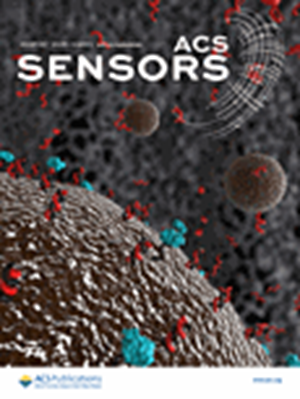Predictive Analysis of Dental Caries Risk via Rapid Urease Activity Evaluation in Saliva Using a ZIF-8 Nanoporous Membrane.
IF 8.2
1区 化学
Q1 CHEMISTRY, ANALYTICAL
引用次数: 0
Abstract
Despite a decrease in the incidence of dental caries over the past four decades, it remains a widespread public health concern. The multifactorial etiology of dental caries complicates effective prevention and early intervention efforts, underscoring the need for the development of rapid predictive methods that account for multiple factors. In this study, we selected the activity of urease secreted by Streptococcus salivarius as a metabolic marker for dental caries. This activity was quantified by measuring the diffusion of hydroxide ions generated from the urease catalytic reaction on urea across a ZIF-8-modified nanoporous membrane. The choice of ZIF-8 was based on its preference in transporting hydroxide ions, enabling the accurate detection of urease activity at concentrations as low as 1 CFU/mL. Subsequently, we collected 287 saliva samples to determine the Michaelis constant (Km) of urease using this method. Logistic regression analysis revealed that both the Km of urease and the frequency of sugar intake are significant factors influencing the development of dental caries. Furthermore, we developed a machine learning methodology for identifying dental caries, achieving an accuracy rate of 81%. It is expected that increasing the sample size will further enhance the predictive accuracy of the model. This innovative approach provides valuable insights into early intervention strategies in the fight against dental caries.利用ZIF-8纳米孔膜快速评估唾液脲酶活性预测龋齿风险
尽管在过去的四十年中,龋齿的发病率有所下降,但它仍然是一个广泛的公共卫生问题。龋齿的多因素病因使有效预防和早期干预工作复杂化,强调需要发展考虑多因素的快速预测方法。在这项研究中,我们选择唾液链球菌分泌的脲酶活性作为龋齿的代谢标志物。通过测量尿素酶催化尿素反应产生的氢氧化物离子在zif -8修饰的纳米孔膜上的扩散来量化这种活性。选择ZIF-8是基于它对氢氧化物离子的偏好,可以在低至1 CFU/mL的浓度下准确检测脲酶活性。随后,我们收集了287份唾液样本,用该方法测定了脲酶的米切里斯常数(Km)。Logistic回归分析显示,脲酶Km和糖摄入频率是影响龋病发生的重要因素。此外,我们开发了一种识别龋齿的机器学习方法,准确率达到81%。预计样本量的增加将进一步提高模型的预测精度。这种创新的方法为防治龋齿的早期干预策略提供了有价值的见解。
本文章由计算机程序翻译,如有差异,请以英文原文为准。
求助全文
约1分钟内获得全文
求助全文
来源期刊

ACS Sensors
Chemical Engineering-Bioengineering
CiteScore
14.50
自引率
3.40%
发文量
372
期刊介绍:
ACS Sensors is a peer-reviewed research journal that focuses on the dissemination of new and original knowledge in the field of sensor science, particularly those that selectively sense chemical or biological species or processes. The journal covers a broad range of topics, including but not limited to biosensors, chemical sensors, gas sensors, intracellular sensors, single molecule sensors, cell chips, and microfluidic devices. It aims to publish articles that address conceptual advances in sensing technology applicable to various types of analytes or application papers that report on the use of existing sensing concepts in new ways or for new analytes.
 求助内容:
求助内容: 应助结果提醒方式:
应助结果提醒方式:


